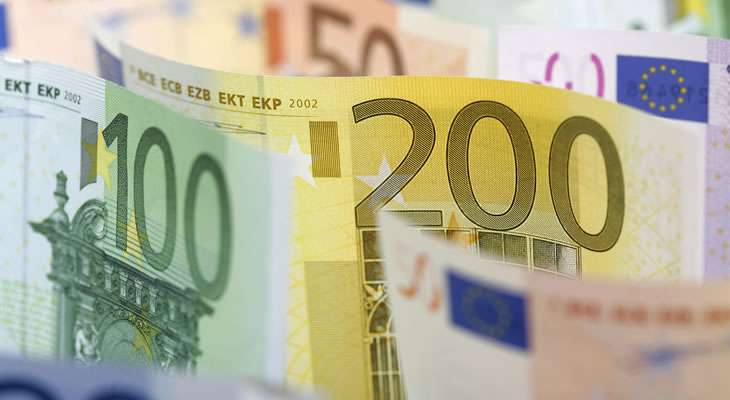Euro to US Dollar Exchange Rate Trends near Monthly High despite Weak Spanish Inflation
Tuesday’s underwhelming Spanish inflation data did little to weaken the Euro (EUR), as the Euro to US Dollar (EUR/USD) exchange rate continued to trend near its weekly highs.
EUR/USD is currently on track to see another week of gains after climbing from 1.2296 to 1.2358 last week. EUR/USD hit a high of 1.2472 on Tuesday morning, which was the pair’s best level since the mid-February.
Despite Tuesday’s underwhelming Spanish inflation stats, the Euro saw solid performance for most of the morning.
Spain’s March Consumer Price Index (CPI) projections remained at 0.1%, rather than rising to 0.3% as expected month-on-month. The yearly figure only edged higher from 1.1% to 1.2% rather than the predicted 1.5%.
This was due to risk-sentiment keeping the shared currency more appealing than the US Dollar (USD).
However, the currency did slip slightly following the publication of some underwhelming Eurozone confidence stats.
Euro (EUR) Exchange Rates Pressured by Signs of Weaker Eurozone Confidence
A double whammy of underwhelming Spanish inflation and disappointing Eurozone confidence stats from March left the Euro slightly weaker on Tuesday morning.
The Eurozone’s final March consumer confidence figure came in at 0.1 as expected, but the March business confidence figure slipped further than expected, from 1.48 to 1.34 rather than the expected 1.39.
Industrial sentiment, services sentiment and economic sentiment figures also all fell short of analyst forecasts, with consumer inflation expectations slipping from 18 to 16.1.
However, EUR/USD still remained well above the week’s opening levels. The Euro’s losses in reaction to the results were minimal as the weaker confidence was partially due to ‘trade war’ concerns, which have eased slightly in recent sessions.
The US and China ramped up trade threats last week, but this week it has been reported that both nations are willing to talk through trade issues rather than spark a ‘trade war’.
As the Euro had been weakened by trade war fears lately weeks too, the relieved market mood on Tuesday supported the shared currency.
US Dollar (USD) Exchange Rates Mixed on Political Uncertainties
Investors have had little reason to buy the US Dollar against the Euro in recent sessions. While the US Dollar did benefit against safe haven currencies like the Japanese Yen (JPY) from relief that a ‘trade war’ was looking less likely, the Euro was stronger.
Other more domestic factors have weighed on US Dollar trade too. The Federal Reserve’s March policy decision, for example, showed that the bank still only intended to hike US interest rates three times total in 2018.
On top of this, US political uncertainties and jitters have kept the US Dollar unappealing too. The US Presidential administration has been shuffling major White House roles, causing market concerns that there is chaos at the top of government.
Euro to US Dollar (EUR/USD) Forecast: Could Further Losses Be Ahead?
The Euro to US Dollar (EUR/USD) exchange rate only saw slight losses on Tuesday, but if other Eurozone ecostats disappoint investors later in the week there could be more losses ahead.
Thursday will see the publication of major March stats from Germany, including unemployment and inflation projections.
If German Consumer Price Index (CPI) data falls short of expectations, investors will perceive little reason for the European Central Bank (ECB) to take a more hawkish tone on monetary policy any time soon. This could cause the Euro to fall.
Friday will round the week off with French and Italian inflation projections.
Essentially, if inflation projections disappoint the Euro to US Dollar exchange rate is likely to fall.
US Gross Domestic Product and Personal Consumption Expenditure (PCE) data due on Wednesday and Thursday could influence the EUR/USD outlook too.
PCE, in particular, is the Federal Reserve’s inflation measure of choice. As a result, a surprising US PCE report could impact the US Dollar.


Comments are closed.